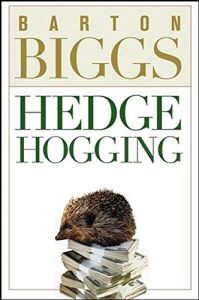Join getAbstract to access the summary!

Join getAbstract to access the summary!
Barton Biggs
Hedgehogging
Wiley, 2006
What's inside?
Extraordinary reminiscences and revelations of a Wall Street global strategist and hedge fund operator.
Recommendation
Hedgehoggers come in different sizes and personalities, and their results swing widely from high levels of success to abject failure. Hedge-fund investing is only for rich people and institutions; however, these funds play an important role in the stock market and the economy. Author Barton Biggs is a cultured, high-level money manager and global strategist. After 30 years with Morgan Stanley (which took public exception to parts of this book), he raised substantial capital through his wealthy family and investors, and entered the hedgehogging jungle. He describes the field both coldly and romantically. He is an effective raconteur, especially when he details war stories about Wall Street’s unethical, double-crossing maneuvers, and strange but wealthy characters. getAbstract recommends this book for its smooth, dramatic writing about hedge funds, their context and the players who run them.
Summary
About the Author
As a young Yale student, Barton Biggs was turned off by his stock-picking relatives and headed for creative writing. Yet he got to Wall Street. Within four years Institutional Investor’s poll ranked him as its top global strategist. He is a principal in a hedge fund, managing “well over” $1 billion.
















Comment on this summary